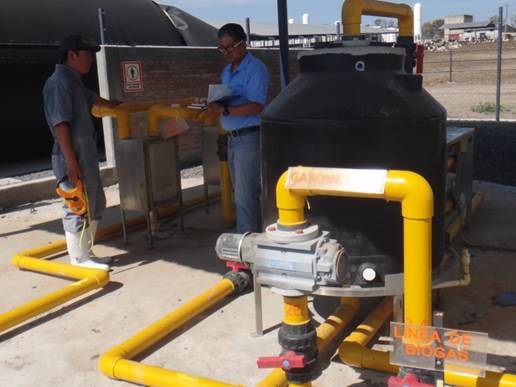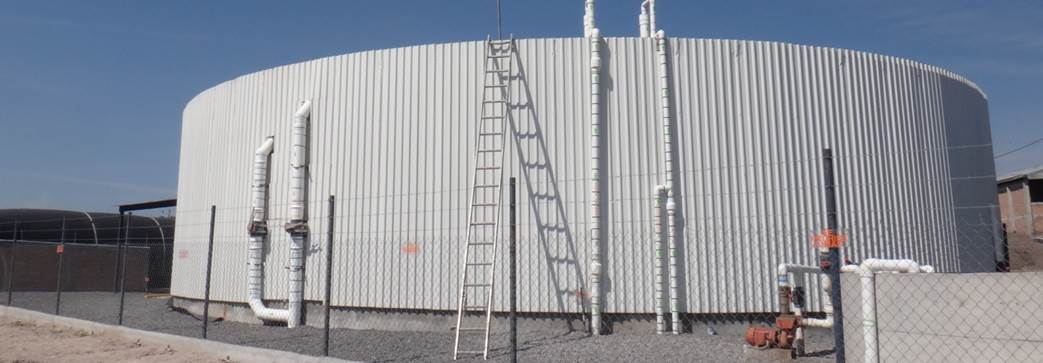Biogas from Organic Waste and Biomass A BMBF project to produce biogas from organic waste and biomass in Mexico through an innovative co-fermentation process

The biogas plant is the first in Mexico on an industrial scale, intensively controlled and effectively operated. This pioneering facility will serve as a model system in the future. The scientist will be supported by Leisdy Gisse Alvarado who will be carrying out her internship on site within the framework of her studies 'Technology of Biogenic Raw Materials'.
As part of the Federal Ministry of Education and Research (BMBF) funded project 'BIOGASMEX - The production of biogas from organic waste and biomass in Mexico through an innovative co-fermentation process', the Department of Waste Management is conducting a knowledge and technology transfer from Cottbus to Querétaro Mexico. The aim of the project is the energy use of urban and agricultural waste. The challenge is to make the existing high development potential usable for Mexico and at the same time mutually advantageous to the waste producers and energy consumers.
The joint project is based on a successful cooperation that has existed since 2008 between the Mexican Centre for Research and Development CIDETEQ, the Mexican industry partners PILGRIMS and the BTU Cottbus-Senftenberg. The organization and implementation was carried out by Violeta Bravo Sepúlveda Ph.D., Dr.-Ing Marko Burkhardt from the Department of Waste Management and Prof. Dr.-Ing Günter Busch (Managing Director of the BTU An-Institute INBIA).
In addition to representatives of the National Ministry of Research CONACYT, the Ministry of Environment SEDESU and the Ministry of Agriculture SAGARPA of the state of Querétaro, companies from the industrial and agricultural sectors also participated. Discussions included potential technologies and raw materials for the production of biogas and fertilizers as well as possible scenarios for the implementation into the challenging site that is Mexico. The BTU Cottbus-Senftenberg has achieved initial success working with the food manufacturer La Perla and the chicken processing company PILGRIMS. Both companies can now cover a large part of their own energy needs by exploiting the waste they produce themselves. The company Xaquixe from Oaxaca, which uses recycled glass to produce drinking glasses, bottles and vases also wants to replace fossil natural gas used for melting waste glass with biogas in the future.
Optimum utilization of the substrate
The planned biogas plant is to be operated by the Anaerobic Sequencing Batch Reactor (ASBR) procedure, which was developed by the BTU Cottbus-Senftenberg. Through a controlled sequence of sedimentation and mixing, the still unreacted substrate can be kept in the system longer. It is not discharged and undergoes a stronger implementation. The anaerobic methanogenic microorganisms adapted to the substrate remain immobilized in the system. Thus, the ASBR process is characterized by an operation mode tailored to the substrate at a higher degree of degradation and increased biogas production.

